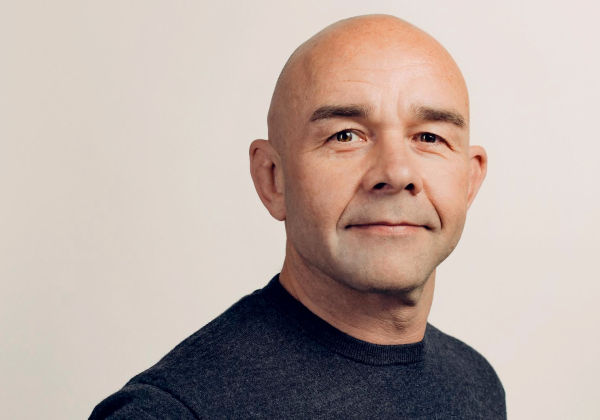Pepperidge Farm’s Irene Britt: Finding Your Pools of Profit
For Pepperidge Farm’s Irene Britt, great strategy is born from great insight.
The former chief strategy officer at Campbell Soup Company and current president of Pepperidge Farm has spent 28 years leading transformations and turnarounds. That includes serving as the Vice President and General Manager of Sauces and Beverages for Campbell’s and leading that business unit to three consecutive years of top- and bottom-line growth, with consistent gains of net sales, market share, and profit in the U.S. beverages business — an industry with annual revenues of roughly $400 billion.
That sort of growth is Britt’s charge again as the leader of Pepperidge Farm — a position she took in August 2012 — and Senior Vice President of Global Baking and Snacking. With annual net income from global baking and snacking in excess of $2 billion, bread and crackers account for a substantial slice of Campbell’s overall portfolio. Those are the exact products in which Pepperidge Farm specializes.
Plotting a future
The iconic brand — home to both the Milano cookie and the Goldfish cracker — has been part of the Campbell’s family since 1961, and with annual revenues topping $1.5 billion, Pepperidge Farm is in a good position. The company is strong, and business is good.
A storied history
When Irene Britt took over as president of Pepperidge Farm in August 2012, she became only the second woman to head up the iconic American brand. The first? The company’s founder Margaret Rudkin.
A Connecticut homemaker, Rudkin started baking bread during the heart of the Depression — not as a result of trying economic conditions, but because her young son was allergic to many of the ingredients in store-bought commercial bread. When she brought her loaves to a nearby grocer and asked if he could sell them, she was told the price (25 cents a loaf versus 10 cents for commercial bread) would only put off customers who were already cash strapped. By the time she returned home, there was a phone message from the grocer asking her for more loaves—they had already sold out, and the premium stamp of Pepperidge Farm was off and running.
Britt said in a late July analysts meeting that the introduction of a new line of soft cookies called Dessert Shop has contributed to a turnaround in the company’s sweet portfolio. Pepperidge Farm was also well positioned to fill the void created by the departure of Hostess from the market. Britt told analysts that Hostess’s exit left seven points of market share up for grabs. Pepperidge Farm’s fair share of that should have been less than a half of a percentage point. Instead, the company claimed more than double that.
Still, even with a promising year and numbers that are looking up, Pepperidge Farm remains a premium player in the United States. While there is nothing wrong with being nimble and profitable, Britt is asking, what else is there? Is Pepperidge Farm OK being a part of a consumer’s life once in a while because it is not a frequent part of consumption patterns? Or should the brand be more relevant in people’s lives?
“We don’t have the answers yet,” Britt says, “but that’s the challenge we’ve given ourselves.”
It’s asking hard questions like these that have served Britt well throughout her career. Whether it was her time heading up sauces and beverages or as president of North American food service for Campbell’s, Britt and the businesses she has run have succeeded by building a winning strategy — a process that starts with insights.
Development of strategy: Macro and micro
Britt says she starts the strategy process by going to 30,000 feet and looking at a company or brand’s business model and its entire value chain. This macro-level inspection should result in three things — understanding of:
- Where are the points of pressure?
- Where is the balance of power in any of the relationships on the value chain?
- Where are the profit pools?
Once those insights are in hand, leaders must determine how and where they can make shifts to gain sustainable, competitive advantage.
At a consumer-driven company, like Campbell’s, it’s also necessary to address the consumer proposition — having consumer behavioral insights and an understanding of how to shift those insights to get to a broader vision of where to push the brand.
“When I enter into a situation in any new business unit or company that I’m taking over, it’s helpful to go in that order,” Britt says. “From a very, very high level ‘What does the value chain look like?’ all the way down to ‘Then let’s get deep into consumer behavior’ and have the two of them match.”
Taking advantage of a crisis
Britt took over Campbell’s North American food service operations the month the U.S. government declared that the economy was officially in a recession. There was a panic in the food service industry because of consumer reaction. People were cutting back on discretionary spending. They were packing lunches. They were eating dinner at home.
Food service is already a tougher industry for manufacturers. They are ingredient suppliers with no forward-facing brands and little control in the value chain. The balance of power is with the operators and distributors.
So coming into food services, Britt did what good leaders do. She pounced. If food service already disadvantages the manufacturers, then do not let a good crisis go to waste. A recession that’s causing a panic in the industry is the perfect time to re-strategize.
Britt and her team ripped apart the value chain. They found the points of pressure. They identified the balances of power.
“We figured out the bulk of the benefit was with distributors, a few big ones, that controlled a lot of the access into the marketplace and to the operators,” Britt says, “the operators being the Applebees and McDonald’s of the world.”
With their weak position in the marketplace, manufacturers like Campbell’s did not have a basis to go in and say, “I’m taking back margin.” But that’s what Britt wanted to do.
“So we said, ‘What can we give to have that get?’ because we need more profitability back so that we can reinvest it in our products and our service and all the rest of it,” Britt says. “So how do we wrestle that out?”
Here’s how. Campbell’s talked to distributors. They presented them with a set of propositions, including category management skills that could be leveraged from the Campbell’s retail side. There were product improvements that could be made if Campbell’s could get some of the margin back.
Campbell’s acknowledged that everyone had objectives they were trying to achieve. They all had margins, but they needed to grow. Campbell’s proposal was that the distributors and operators could not do that by buying better. They had to do it by growing their customer base, and working with Campbell’s would allow them to do that.
“We had these conversations,” Britt says. “They were rather tough conversations with customers in general, but that’s where we ended up going. We were able to understand that entire value chain, how to shift some of the profit pool, but be able to reinvest that shift to get overall growth, which benefitted everyone.”
Making adjustments
It was not a benefit that everyone was sold on, however, and Britt wasn’t surprised. Strategy is not something that is set in stone. It is a chess game that requires preparation and the ability to adjust.
“Strategy doesn’t often fail spectacularly,” Britt says. “It ends up falling apart in pieces in execution. You have to be able to bob and weave enough to say ‘OK, it’s not working here. That person is not motivated by growth, obviously. We’ve got to get back at that in some other way.’ You have to start adjusting, sometimes using the relationships you built in other parts of the customer world, sometimes saying ‘I’m going to take a pass on that and make up the rest of what I expected out of this initiative somewhere else.’ ”
A radical vision of the future
Execution on strategy not only requires flexibility, it also requires people buying-in to a future that may look impossible. This is where Britt excels.
“When Irene steps into a business, she immediately elevates the level of engagement from her organization,” says Insigniam co-founder Shideh Sedgh Bina, who has a long history of working with Britt. “No one can get away with ‘just coming to work,’ they are expected to show up and bring new, critical thinking and high levels of collaboration. She is relentless in mobilizing her leadership team to articulate a winning vision. And then she is relentless in making sure they execute.”
Building that winning vision is where Britt and her Pepperidge Farm team are now, and the challenge could appear daunting. But, listening to Britt talk, you can tell that it is also an exciting time.
“You can’t come from what you have as a starting point and say ‘I can eke a little bit more here. I can eke a little bit more here’,” Britt says. “You have to actually create a future that articulates something that isn’t a linear, rational path from where you stand right now.”
After that vision is developed, a broad, cross-section of leadership must plot a way to get there.
“Once you get that future imbedded with everybody’s help, then you empower people and let them free to run in that area that says ‘But we could do this, but we could do this, we could do this, we could do this,’ ” Britt says.
That’s where the buy-in comes. When people are allowed to create that vision for the future, the place where strategy will take the company, then it makes the execution of that strategy that much easier.
“If I can articulate and inspire people with that vision that they’ve helped create themselves, they so truly believe it that they can taste it in their mouths, then the unleashing of that incredible talent toward that goal is a multiplier of what you can do as a leader,” Britt says.
Corporate strategy and multiple brands
Prior to taking over as president of Pepperidge Farm, Irene Britt served as the Chief Strategy Officer for Campbell’s. She says that the principles of strategy development do not change whether you are working on a plan for a single brand or its parent company. It all comes down to gathering insights.
“A good corporate strategy is based on a full analysis of your portfolio,” Britt says. “We are talking about a deep portfolio analysis with the end goal of ‘How do I run this portfolio and its component pieces with the potential interaction between them in both revenue and resourcing, and how do I create the most value out of that?’ ”
For Campbell’s that means looking at the world and the markets where the company was already present and the places where there is opportunity for growth. It also means looking at everything from geopolitical and economic trends to shifting eating habits.
Then internally the company has to look at its individual businesses and do a value creation analysis. What is the current profitability? What are the capital resources each business takes up? What are their trajectories? Where is the potential for growth?
The corporate strategy is born from the marriage of the macro view and the micro view. Once the goals are in place, each of the individual brands are plugged into the strategy. Some businesses will need to focus on higher growth, others on cost.
“It’s not the same from business to business, and that’s where you get the beautiful marrying of an overall trajectory for the company that’s based on the very studied roles of each of these businesses,” Britt says



